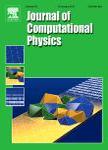版权所有:内蒙古大学图书馆 技术提供:维普资讯• 智图
内蒙古自治区呼和浩特市赛罕区大学西街235号 邮编: 010021

作者机构:Univ Kentucky Dept Mech Engn Lexington KY 40506 USA NASA Computat Aerosci Branch Ames Res Ctr Moffett Field CA 94035 USA Univ Maryland Dept Aerosp Engn College Pk MD 20740 USA
出 版 物:《JOURNAL OF COMPUTATIONAL PHYSICS》 (计算物理学杂志)
年 卷 期:2021年第438卷
页 面:110369-110369页
核心收录:
学科分类:07[理学] 0812[工学-计算机科学与技术(可授工学、理学学位)] 0702[理学-物理学]
基 金:NASA Entry Systems Modeling (ESM) project NASA ARMD Transformational Tools and Technologies (T3) project NASA Kentucky EPSCoR Research Infrastructure Development Grant (RIDG) program [RIDG-17-005] Computational Aerosciences Branch at NASA Ames Research Center [80NSSC18K0883]
主 题:Fluid-structure interaction Immersed boundary methods Higher-order methods Finite element analysis Shell elements Computational mechanics
摘 要:A parallel computational method for simulating fluid-structure interaction problems involving large, geometrically nonlinear deformations of thin shell structures is presented and validated. A compressible Navier-Stokes solver utilizing a higher-order finite difference immersed boundary method is coupled with a geometrically nonlinear computational structural dynamics solver employing the mixed interpolation of tensorial components formulation for thin triangular shell elements. A weak fluid-structure coupling strategy is used to advance the numerical solution in time. The thin shell structures are represented in the fluid domain by a geometry mesh with a finite thickness at or below the size of the local grid spacing in the fluid domain. The methodologies for load and displacement transfer between the disparate geometry and structural meshes are detailed considering a parallel computing environment. The coupled method is validated for canonical simulation based test cases and experimental fluid-structure interaction problems considering large deformations of thin shell structures, including a shock impinging on a cantilever plate, a fixed cylinder with a flexible trailing filament in channel flow, a thin, clamped plate in wall-bounded flow, and a flag waving in viscous crossflow. The FSI method is then demonstrated on a compliant circular sheet with a clamped center exposed to crossflow and finally applied to the inflation of a spacecraft disk-gap-band parachute inflating in supersonic flow conditions resembling the upper Martian atmosphere, where comparison with experimental data is provided. Published by Elsevier Inc. This is an open access article under the CC BY-NC-ND license (http://***/licenses/by-nc-nd/4.0/).